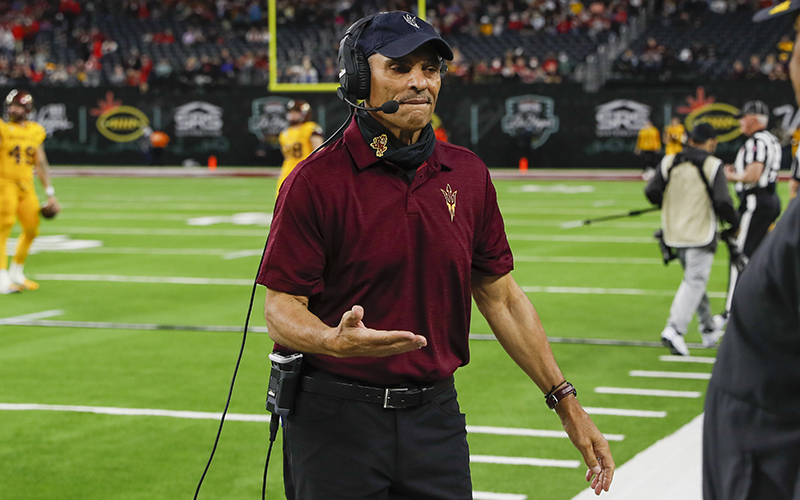PHOENIX – Asked about possible expansion from the addition of Pac-12 schools recently, incoming Big 12 commissioner Brett Yormark left “no doubt” that his conference is “open for business.”
“We will leave no stone unturned to drive value for the conference,” Yormark said during the recent Big 12 Media Days. “All in an effort to position the conference in a way that not only grows the Big 12 brand and business, but makes us a bit more contemporary.”
At the time, Yormark’s declaration signaled that the conference realignment dominoes were likely to continue falling, but speculation surrounding a new potential superconference ended as swiftly as it started. Discussions about a partnership between the Big 12 and Pac-12 came to an end this week “for a multitude of reasons,” ESPN reports. Both sides determined a deal would not have returned revenue or value, according to the report.
The latest development puts a dent in Yormark’s expansion plans, at least for now. The Big 12 managed to weather the departure of Texas and the University of Oklahoma to the SEC late last summer when outgoing Big 12 commissioner Bob Bowlsby announced that BYU, Cincinnati, Central Florida and Houston will join the conference on July 1, 2023.
On June 30, two days after the Big 12 announced Yormark as the new commissioner, USC and UCLA announced they will leave the Pac-12 conference for the Big Ten. Quite the introduction to his new job, Yormark said he was excited about the news.
“I was excited by (the news of USC and UCLA leaving the Pac-12) because I saw there was opportunity,” Yormark said last week. “I’ve received a lot of phone calls (with) a lot of interest, and we’re exploring those levels of interest.”
Added Bowlsby: “The seismic shifts are continuing in collegiate athletics.”
Not only will the shifts lead to a change in the format of conference championships, but also potentially how fans watch teams compete for the title. As media rights continue to drive revenue in college football, Kliavkoff and Yormark will need to work strategically to keep their conferences afloat in the swiftly changing landscape. Establishing partnerships is one of many ideas on the table.
Pac-12 commissioner George Kliavkoff was reportedly authorized to “immediately begin” media rights negotiations in early July, while Yormark said upcoming negotiations for a new media rights deal in 2025 remain top of list. The Big 12’s media rights deal can’t be negotiated until 2024.
Both conferences could use some momentum in negotiations, and it would be advantageous for either conference to expand by finding alternatives to poach from other conferences after each lost two blue blood members within the last year.
“There is no higher priority than to be in the best position the Big 12 for its upcoming multimedia rights negotiations,” Yormark said. “Everything we do must create momentum for these negotiations, as well as building the value of the Big 12 brand and business.”
The Pacific Coast Conference added USC and UCLA in 1922 and 1928, respectively, before evolving into the Pac-12. Texas and Oklahoma had been members of the Big 12 since the conference’s formation in 1996. Prior to joining, Oklahoma was a member of the Big Six, which began in 1928 and added Colorado in 1948, Oklahoma State in 1959 and the four Texas schools (Texas, Texas Tech, Texas A&M and Baylor) in 1996.
There’s no doubt all eyes will be on the next move for the Big 12 and the Pac-12 – and that the failed negotiations between the two Power Five conferences serves as only the starting point of what’s to come.
And certainly, by all accounts at Big 12 Media Days, the conference will remain “open for business” for the next wave of schools to join the bargaining table.

